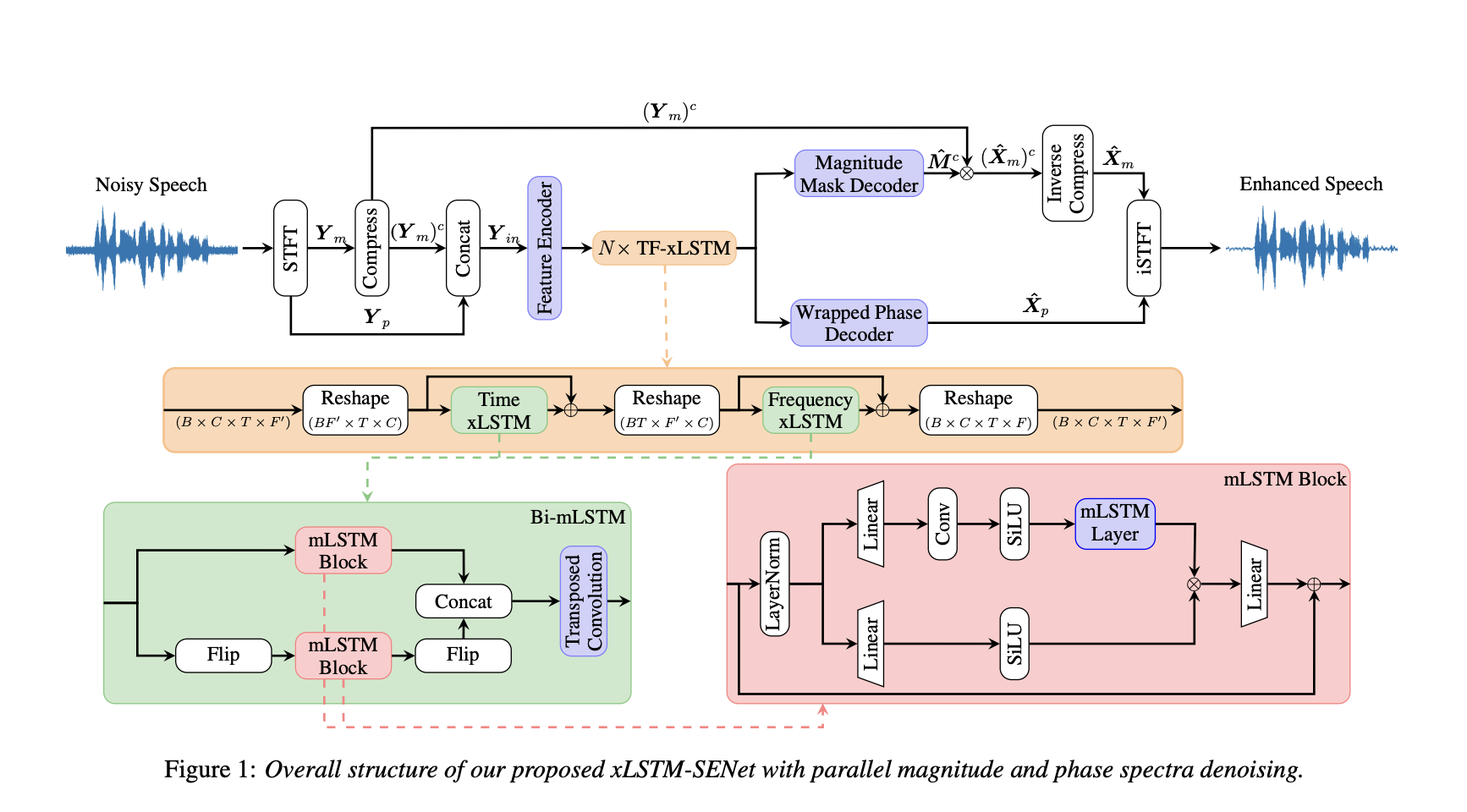
Challenges in Speech Processing
Speech processing systems often have difficulty providing clear audio in noisy environments. This affects important applications like hearing aids, automatic speech recognition (ASR), and speaker verification. Traditional speech enhancement systems use neural networks but have limitations, such as high computational demands and the need for large datasets. This shows the need for more efficient and scalable solutions.
Introducing xLSTM-SENet
To tackle these challenges, researchers from Aalborg University and Oticon A/S created xLSTM-SENet, the first xLSTM-based single-channel speech enhancement system. It improves traditional LSTM models by adding exponential gating and matrix memory, addressing issues like limited storage and parallel processing. By combining xLSTM with the MP-SENet framework, this system effectively enhances both magnitude and phase spectra.
Technical Overview and Advantages
xLSTM-SENet features a time-frequency (TF) domain encoder-decoder structure. It uses TF-xLSTM blocks with mLSTM layers to capture both time and frequency dependencies. The mLSTMs allow for better storage control and increased capacity. Its bidirectional design enhances the model’s ability to use information from both past and future frames. Specialized decoders for magnitude and phase spectra improve speech quality and clarity, making xLSTM-SENet suitable for devices with limited computational power.
Performance and Findings
Tests using the VoiceBank+DEMAND dataset show that xLSTM-SENet performs as well as or better than leading models like SEMamba and MP-SENet. It achieved a PESQ score of 3.48 and a STOI of 0.96, along with significant improvements in other metrics. Although it requires longer training times than some attention-based models, its performance proves its value.
Conclusion
xLSTM-SENet effectively addresses the challenges in single-channel speech enhancement. By utilizing the xLSTM architecture, it offers a balance of scalability, efficiency, and strong performance. This advancement in speech enhancement technology has the potential for real-world applications, such as in hearing aids and speech recognition systems. As these techniques develop, they will make high-quality speech processing more accessible and practical.
Stay Connected
Check out the Paper. All credit for this research goes to the researchers of this project. Also, don’t forget to follow us on Twitter, join our Telegram Channel, and connect with our LinkedIn Group. Join our 65k+ ML SubReddit for more insights.
Transform Your Business with AI
If you want to evolve your company with AI, stay competitive, and leverage the benefits of xLSTM-SENet, consider the following:
- Identify Automation Opportunities: Find key customer interactions that can benefit from AI.
- Define KPIs: Ensure measurable impacts on business outcomes.
- Select an AI Solution: Choose tools that meet your needs and allow for customization.
- Implement Gradually: Start with a pilot, gather data, and expand AI usage carefully.
For AI KPI management advice, connect with us at hello@itinai.com. For continuous insights into leveraging AI, stay tuned on our Telegram at t.me/itinainews or Twitter at @itinaicom.
Discover how AI can redefine your sales processes and customer engagement. Explore solutions at itinai.com.




























